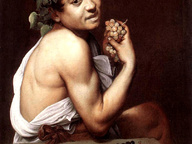Afarin Sajedi. Illusion

Afarin Sajedi, Illusion 4, 100x100cm, Acrylic on canvas
Dal 16 April 2016 al 16 April 2016
Roma
Luogo: Dorothy Circus Gallery
Indirizzo: via dei Pettinari 76
Orari: Lun 10:30-18,30; Mar 10:30-19; Merc-Gio 10:30-19:30; Ven-Sab 11:30-20
Telefono per informazioni: +39 06 68805928
E-Mail info: info@dorothycircusgallery.com
Sito ufficiale: http://www.dorothycircusgallery.it
Dopo il successo della sua collaborazione con la Dorothy Circus Gallery in occasione della collettiva“God is her Deejay”e dell’evento speciale “Printemps Parisien”, l’artista Iraniana Afarin Sajedi torna a Roma per “Illusion”, la sua prima personale ufficiale ospitata e curata dalla DCG.
In questa mostra, che inaugurerà il 16 Aprile 2016, il pubblico verrà condotto e immerso nella surreale atmosfera delle nuove opere realizzate dall’artista. Il tema è l’illusione, da cui il titolo della mostra, raccontato attraverso cinque sconvolgenti tele di grande dimensione, che accolgono lo spettatore nella Red Hall delle Dorothy Circus Gallery. Questi splendidi dipinti, sono caratterizzati da una figura femminile centrale che emerge da uno sfondo delicatamente colorato, spesso interrotto da elementi naturali che attraversano lo scenario. I volti delle donne spiccano dalla tele per comunicare direttamente con ogni osservatore; creano un silenzioso dialogo fatto di suggestioni ed emozioni, rivolto a scrutare e colpire lo sguardo attento delle persone che, stupite, ammireranno i suoi lavori. Nonostante apparentemente sommerse in un profondo mare di quiete, le donne dipinte da scuri pennelli, hanno l’intenzione di indagare l’animo umano, portando alla luce i temi legati sia a determinate realtà socio-politiche che all’esperienza delle emozioni più intime. La parola chiave “Illusione”, può essere metaforicamente visualizzata come una costante in ciascuno di questi lavori, in cui ogni cosa è enigmatica, sospesa, indefinita, costantemente al limite tra realtà e immaginazione.Nonostante apparentemente sommerse in un profondo mare di quiete, le donne dipinte ad acrilico su tela, hanno l’intenzione di scrutare l’animo umano, portando alla luce i temi legati sia a determinate realtà socio-politiche che all’esperienza delle emozioni più intime.
La parola chiave “Illusione”, può essere metaforicamente visualizzata come icona costante in ciascuno di questi lavori, in cui ogni elemento è enigmatico, sospeso, indefinito, costantemente al limite tra realtà e immaginazione.
Mentre nella sua passata produzione artistica, i volti affioravano da uno sfondo profondo e scuro, descrivendone una forte sofferenza, ora le figure sono quiete e vestite con accessori che rimandano al Futurismo. Ancora una volta, gli elementi chiave sono ripetuti in tutti i dipinti, creando forti significati simbolici che generano una particolare atmosfera in cui le donne subiscono un’attento studio da diversi punti di vista.
La serie ha origine con un profilo, da cui spicca un pesce, usato come insolito e surreale copricapo; continua poi con la prima vista frontale, dove la donna sembra avvilita, con gli occhi chiusi, raccolta a meditare, coperta da un elmo che la protegge.
Questo elemento tiene la donna distaccata dal mondo esterno, così da poterle concedere di dedicare tutte le sue attenzioni esclusivamente al pesce, che ora si trova disteso proprio sotto il suo mento. Nella seconda visuale frontale, il volto si rivolge allo spettatore, fissandolo con il suo sguardo lucente, come per cercare qualcuno con cui comunicare. Tutto ad un tratto ecco che il pesce sparisce dalla scena, lasciandone pochi frammenti, e alla fine un taglio fotografico interrompe la serie mostrando la stessa donna in un posizione asimmetrica, coperta da un elmo che, prevalendo la composizione, la sovrasta. I suoi occhi sono coperti da curiosi occhiali da sole, che sembrano voler cessare il suo desiderio di confidarsi.
Le emozioni di queste donne, sentite e vissute in maniera diversa in ogni singola rappresentazione pittorica, sono marcate da vari e bizzarri trucchi e acconciature. “Le donne spesso mi dicono quanto amino usare il trucco poiché esso ti consente di indossare un altro volto”, dice Sajedi. La sua palette di colori cerca di animare l’intensità dei sentimenti di quelle anime, sostenendole in ogni ruolo o situazione in cui decidano di inoltrarsi.
Insieme a queste grandi tele, Afarin Sajedi esporrà dei piccoli lavori che propongono un differente approccio alla sua produzione artistica. Questi lavori percorrono un flusso narrativo, raccontando una storia che è più figurativa e meno evanescente agli occhi dell’osservatore. Più di un personaggio appare sulla scena, mentre la figura umana presentata è ambigua e delle volte sostituita da interi esseri animali o solo da alcune loro parti. Nuovamente, il pesce attrae l’attenzione come un riferimento simbolico che allude al flusso delle emozioni, che pulsano dentro le vibranti vene delle donne ritratte. I volti, interrogando gli osservatori, invitano a scoprire i significati più profondi di questa simbologia. I loro occhi sono quasi sempre chiusi, come ad evidenziare non solo lea privazioni che queste donne sono costrette a subire quotidianamente, ma anche la possibilità di osservare il mondo attraverso un “una propria visione” più intima e non necessariamente fisica. La loro esperienza e la loro abilità di percepire le emozioni, è ciò che le rende ai nostri occhi forti e estremamente affascinanti.
SCARICA IL COMUNICATO IN PDF
COMMENTI

-
 Dal 20 December 2025 al 20 April 2026
Caserta | Reggia di Caserta
Dal 20 December 2025 al 20 April 2026
Caserta | Reggia di Caserta
Regine: trame di cultura e diplomazia tra Napoli e l’Europa
-
 Dal 19 December 2025 al 23 March 2026
Torino | Palazzo Madama - Museo Civico d’Arte Antica
Dal 19 December 2025 al 23 March 2026
Torino | Palazzo Madama - Museo Civico d’Arte Antica
Il castello ritrovato. Palazzo Madama dall’età romana al medioevo
-
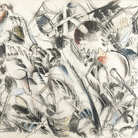 Dal 17 December 2025 al 19 January 2026
Roma | Palazzo della Cancelleria
Dal 17 December 2025 al 19 January 2026
Roma | Palazzo della Cancelleria
De Humana Mensura di Linda Karshan
-
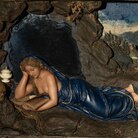 Dal 18 December 2025 al 12 April 2026
Firenze | Gallerie degli Uffizi
Dal 18 December 2025 al 12 April 2026
Firenze | Gallerie degli Uffizi
Cera una volta. Sculture dalle collezioni medicee
-
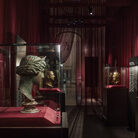 Dal 11 December 2025 al 9 April 2026
Firenze | Museo Archeologico Nazionale di Firenze
Dal 11 December 2025 al 9 April 2026
Firenze | Museo Archeologico Nazionale di Firenze
Icone di Potere e Bellezza
-
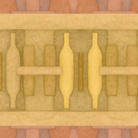 Dal 11 December 2025 al 11 January 2026
Roma | Palazzo Esposizioni Roma
Dal 11 December 2025 al 11 January 2026
Roma | Palazzo Esposizioni Roma
Giorgio Morandi nella Collezione Eni. Un viaggio attraverso la storia culturale del cane a sei zampe e l’eredità di Enrico Mattei
